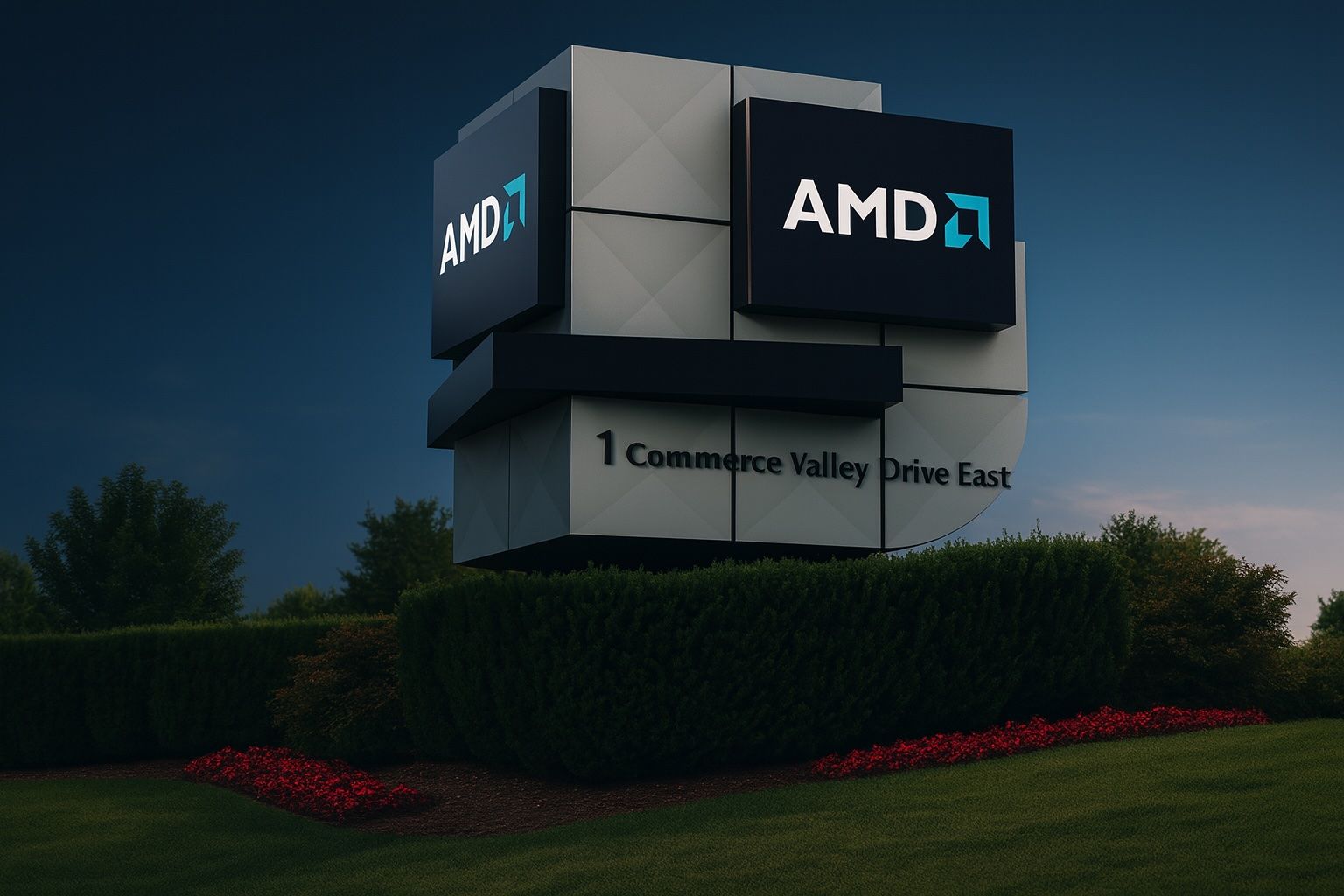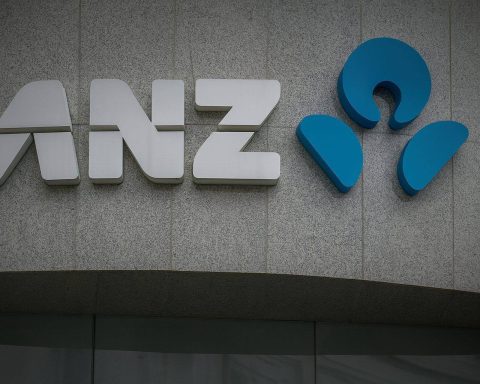Advanced Micro Devices (NASDAQ: AMD) is back in the spotlight today as AI optimism returns to Wall Street, Nvidia’s blockbuster earnings spark a sector-wide rally, and AMD unveils a high‑profile AI data center joint venture in Saudi Arabia. At the same time, stretched valuations and recent volatility mean the debate over AMD stock is far from settled.
Note: All prices and figures are as of November 20, 2025 and may change. This article is for information only and is not investment advice.
AMD stock price today: sharp bounce after a bruising week
AMD closed on Wednesday at $223.55 per share, capping an almost 10–11% decline over the past five trading days as investors rotated out of expensive AI names. [1]
In pre‑market trading and early Thursday action, AMD has rebounded:
- Finbold reports AMD climbed to around $232.80 in pre‑market, up about 4.1% versus Wednesday’s close. [2]
- CoinCentral notes that during Thursday’s session AMD has traded around $233.49, swinging between roughly $219.71 and $235.50 as traders react to Nvidia’s results and renewed AI momentum. [3]
Fundamentally, AMD remains a classic high‑growth, high‑valuation AI play:
- 52‑week range: about $76.48 – $267.08
- Market cap: ~$364 billion
- Trailing P/E: ~128x
- PEG ratio: ~2.4
- Beta: ~1.9, underscoring its volatility versus the broader market. [4]
Even after today’s bounce, AMD trades well below its recent high near $267 but far above last year’s lows, mirroring the boom‑and‑bust swings typical of AI‑linked semiconductor stocks.
Nvidia’s blowout earnings reignite the AI-chip trade – and lift AMD
The immediate catalyst for today’s move is Nvidia’s latest quarterly earnings, which once again crushed expectations and reassured markets that AI infrastructure spending remains robust.
- Nvidia reported another “blow‑out” quarter with strong guidance, easing fears that the AI boom might be fading. [5]
- Reuters notes that the results sent global tech stocks sharply higher, with AMD shares rising about 5% in U.S. pre‑market trading alongside gains in Intel, Arm, Micron and Broadcom. [6]
Goldman Sachs and other banks framed Nvidia’s guidance as evidence that AI data center capex remains on track, which investors are extrapolating to other players in the AI value chain — including AMD. [7]
The logic is straightforward:
- If hyperscale cloud providers keep spending aggressively on GPUs and accelerators,
- And if they seek supplier diversification beyond Nvidia,
- Then AMD’s Instinct accelerators and EPYC CPUs stand to capture a larger slice of that spend over the next several years.
Today’s rally is therefore as much about sector sentiment as it is about AMD‑specific developments.
New Saudi AI infrastructure joint venture with HUMAIN and Cisco
The most AMD‑specific headline around today is the new AI infrastructure joint venture in Saudi Arabia with Cisco and state‑backed AI firm HUMAIN.
Key details of the AMD–Cisco–HUMAIN JV
According to Cisco’s official announcement and multiple news reports: [8]
- Partners: AMD, Cisco and HUMAIN (a Public Investment Fund–backed AI company in Saudi Arabia).
- Structure: The three will form a joint venture and act as founding investors and exclusive technology partners.
- Scale: The JV plans to deploy up to 1 gigawatt (1 GW) of AI‑optimized data center capacity by 2030, starting with a 100‑megawatt (100 MW) facility in Saudi Arabia expected to begin operations in 2026.
- First customer: Reuters reports that the first 100 MW site has its capacity effectively spoken for by generative video startup Luma AI, making it the JV’s inaugural anchor customer. [9]
- Technology stack: HUMAIN provides modern data centers; AMD contributes Instinct MI450‑class AI accelerators; Cisco supplies networking and infrastructure. [10]
HUMAIN itself is a relatively new but highly ambitious AI company, founded in 2025 under Saudi Arabia’s Public Investment Fund to drive the kingdom’s AI infrastructure and model strategy. It already sources chips from Nvidia, AMD, Qualcomm and others and is pursuing multiple hyperscale partnerships as part of Saudi’s Vision 2030 diversification plan. [11]
Why this JV matters for AMD stock
For AMD shareholders, this JV is notable because it:
- Deepens AMD’s presence in the fast‑growing Middle East AI market, an increasingly important region as U.S. export controls limit some high‑end shipments to China.
- Creates a multi‑year demand pipeline for AMD Instinct GPUs tied to a clearly defined capacity roadmap (up to 1 GW by 2030).
- Aligns directly with AMD’s stated goal of becoming a top‑tier AI data center platform provider, not just a GPU vendor.
In terms of near‑term numbers, management has not disclosed specific revenue contributions. But strategically, it reinforces the idea that AMD’s AI roadmap is being validated by large, sovereign‑backed customers—a narrative Wall Street tends to reward with richer valuation multiples.
Supermicro’s new MI355X server showcases AMD’s MI350 data center momentum
Complementing the Saudi JV, AMD also picked up another ecosystem win through Supermicro, a major server OEM.
On November 19–20, Supermicro announced a new 10U air‑cooled AI server built around AMD Instinct MI355X GPUs, part of the MI350 series: [12]
- The system is marketed as delivering up to 4x generation‑over‑generation AI compute and as much as a 35x leap in inferencing performance versus prior platforms.
- The new MI355X‑based servers are designed for air‑cooled data centers, addressing one of the biggest barriers to deploying ultra‑dense AI racks (cooling and power costs).
- Supermicro emphasized that the systems are shipping now, not just on a roadmap slide.
For AMD, this matters because:
- It broadens the hardware ecosystem around its MI350 series, making it easier for cloud providers and enterprises to deploy AMD GPUs without designing custom systems.
- It reinforces AMD’s messaging from its recent Financial Analyst Day, where the company said the MI350 series is the fastest‑ramping product in AMD’s history, already deployed at scale at Oracle Cloud and other hyperscalers. [13]
In combination, the HUMAIN JV and Supermicro’s announcement give AMD tangible proof points that MI3xx accelerators are gaining real‑world traction, not just generating headlines.
Wall Street turns more bullish: price targets drift toward $300
Today’s rally also rides on a wave of recent analyst upgrades following AMD’s Q3 earnings and Analyst Day.
GuruFocus’ compilation of sell‑side ratings highlights: [14]
- Evercore ISI raised its AMD price target from $270 to $283, reiterating an “Outperform” rating.
- Wedbush reiterated “Outperform” with a target of $290.
- CICC upgraded AMD from “Market Perform” to “Outperform”, targeting $265.
- Piper Sandler boosted its target from $240 to $280 while maintaining “Overweight”.
- Morgan Stanley pushed its target to $260 (Equal‑Weight), and Stifel raised its Buy target to $280.
- Across 43 analysts, the average 12‑month target is about $269.6 with a high estimate of $400 and a low around $134.
CoinCentral adds that other major firms, including Wells Fargo, Mizuho and Bank of America, have recently set targets in the $260–$300 range, with BofA reportedly at the top end around $300, citing potential share gains in servers and accelerators. [15]
In short, consensus Street opinion remains firmly positive, even as some shorter‑term traders worry about valuation and AI “bubble” risk.
U.S. approves Middle East AI chip exports – a mixed but broadly positive signal
Another macro backdrop to today’s move is the U.S. government’s evolving stance on AI chip exports to the Middle East.
The Wall Street Journal reported, and outlets like Investing.com and TradingView echoed, that the U.S. Commerce Department has approved the sale of up to 70,000 advanced AI chips to customers in the UAE and Saudi Arabia under new safeguards designed to prevent the technology from being diverted to China or Huawei. [16]
Key points from these reports:
- The approvals cover tens of thousands of high‑end AI accelerators, with a significant portion expected to be Nvidia hardware, but the move signals greater openness to Middle Eastern AI projects in general. [17]
- Market commentary and live blogs have flagged AMD alongside Nvidia as potential beneficiaries, with AMD shares noted among stocks moving on the export news. [18]
For AMD, the implications are two‑fold:
- Regulatory overhang partially eased
AMD has repeatedly highlighted that Q4 guidance excludes any revenue from MI308 shipments to China because of export restrictions. [19]
Any U.S. willingness to greenlight advanced AI chips for trusted Middle Eastern partners could redirect some of that lost demand into Saudi and UAE projects—exactly the kind of opportunity the HUMAIN JV is positioned to capture. - Geopolitical risk remains
The approvals come with strict conditions and monitoring, and U.S. export policy can change quickly. Investors should not assume a straight‑line expansion of Middle East AI chip sales without further scrutiny from regulators.
Fundamentals check: Q3 earnings, AI roadmap and long-term targets
Behind the headlines, AMD’s recent Q3 2025 results and Financial Analyst Day set the fundamental context for today’s price action.
Q3 2025 earnings
In its November 4 earnings release, AMD reported: [20]
- Revenue:$9.25 billion, up 36% year on year.
- Non‑GAAP EPS:$1.20, modestly ahead of the Street.
- Q4 2025 guidance: about $9.6 billion ± $300 million, implying ~25% YoY and ~4% sequential growth at the midpoint, with non‑GAAP gross margin around 54.5%.
- Management explicitly noted that the outlook assumes no revenue from MI308 AI GPU shipments to China under current export rules.
Segment detail from AMD and subsequent commentary highlight:
- Data center: Strong double‑digit growth driven by Instinct MI300/MI350 accelerators and EPYC CPUs.
- Client & Gaming: Stabilization and modest growth as AI PCs and next‑gen consoles help offset a sluggish traditional PC market.
Analyst Day: tripling profit by 2030?
At its Financial Analyst Day in New York on November 11, AMD laid out some of the most aggressive long‑term targets in big‑cap semis: [21]
- Company‑wide revenue CAGR >35% over the next 3–5 years.
- Data center revenue CAGR >60%, powered by Instinct AI GPUs, EPYC CPUs and networking.
- Non‑GAAP EPS “exceeding $20” over the same horizon—implying more than tripling profits by 2030 relative to current levels.
- Aspirations to reach >50% server CPU revenue share and >80% CAGR in data center AI revenue, as successive MI350, MI450 (“Helios”) and MI500 GPU families roll out through 2027.
These targets are the backbone of the bullish case for AMD at current valuations: if management even comes close to delivering on them, today’s P/E could look more reasonable in hindsight.
The bear case: valuation, competition and technical risks
Not everyone is convinced that AMD’s stock can continue marching higher in a straight line.
A recent FX Leaders note, last updated today, underscores that: [22]
- AMD shares have fallen nearly 10% over the past week, even before today’s bounce.
- The stock previously surged to around $260 on AI enthusiasm, prompting worries that price had outrun fundamentals.
- Technical analysts see risk of a retest of the $200 level if selling resumes.
- The high‑profile OpenAI partnership, which involved AMD taking a stake in exchange for providing Instinct GPUs, has raised questions about profitability and concentration risk around a small number of mega‑customers.
MarketBeat data, meanwhile, shows just how demanding current expectations are:
- P/E ~128x and PEG ~2.4 leave little room for execution missteps.
- Insiders have sold shares in recent months, and some institutions (such as ARS Investment Partners) have modestly trimmed positions, even as overall institutional ownership remains high. [23]
And of course, competition remains intense:
- Nvidia still dominates AI GPUs and continues to post enormous revenue and margin figures. [24]
- Intel is pushing its own accelerators and repositioning its foundry and server businesses.
- Cloud providers are investing aggressively in custom silicon (NPUs/TPUs), which could limit total addressable market for merchant GPUs over time.
For investors, the bear case boils down to a simple question: how much of AMD’s AI opportunity is already priced in?
AMD stock outlook: what to watch after today’s move
For November 20, 2025, the headline story on AMD stock is clear:
- Sector tailwind: Nvidia’s results have re‑ignited belief that the AI infrastructure cycle remains strong, driving a relief rally across chip names. [25]
- Company‑specific catalysts:
- Macro/regulatory backdrop: U.S. approval of up to 70,000 AI chips for UAE and Saudi Arabia, and Saudi’s broader AI ambitions through HUMAIN, create a more supportive environment for AMD’s non‑China growth. [29]
At the same time, prudent investors will keep an eye on:
- Price action around $230–$235
Whether AMD can hold today’s gains or fades back toward $200 will say a lot about how eager buyers really are after the recent pullback. - Further details on the HUMAIN JV
Any clarity on capital commitments, GPU volumes, revenue sharing and timeline could help quantify how meaningful this deal is to AMD’s medium‑term numbers. - Export control developments
Changes—positive or negative—in U.S. AI chip policy toward China, the Middle East and other regions could materially alter AMD’s addressable market. - Execution on the MI350/MI450 roadmap
Customer wins, performance benchmarks, and software ecosystem progress (especially around ROCm) will determine how much share AMD can pry away from Nvidia in data center AI. [30]
Bottom line
On November 20, 2025, AMD stock is rebounding strongly as:
- The AI trade roars back to life on Nvidia’s earnings,
- AMD announces a headline‑grabbing Saudi AI joint venture with HUMAIN and Cisco,
- OEM partners like Supermicro roll out new AMD‑powered AI servers, and
- Wall Street raises its sights, with price targets clustering closer to $270–$300.
But with valuations already rich, competition fierce, and technical risks still lurking, AMD remains a high‑beta, high‑expectation AI play rather than a sleepy value stock.
Anyone considering AMD today should weigh those upside drivers against the risks, align decisions with their own time horizon and risk tolerance, and remember that today’s article is informational only—not a recommendation to buy or sell any security.
References
1. finbold.com, 2. finbold.com, 3. coincentral.com, 4. www.marketbeat.com, 5. finance.yahoo.com, 6. www.reuters.com, 7. finbold.com, 8. newsroom.cisco.com, 9. www.reuters.com, 10. newsroom.cisco.com, 11. en.wikipedia.org, 12. laotiantimes.com, 13. ir.amd.com, 14. www.gurufocus.com, 15. coincentral.com, 16. www.investing.com, 17. news.aibase.com, 18. www.barrons.com, 19. ir.amd.com, 20. ir.amd.com, 21. ir.amd.com, 22. www.fxleaders.com, 23. www.marketbeat.com, 24. finance.yahoo.com, 25. www.reuters.com, 26. newsroom.cisco.com, 27. laotiantimes.com, 28. www.gurufocus.com, 29. www.investing.com, 30. ir.amd.com








